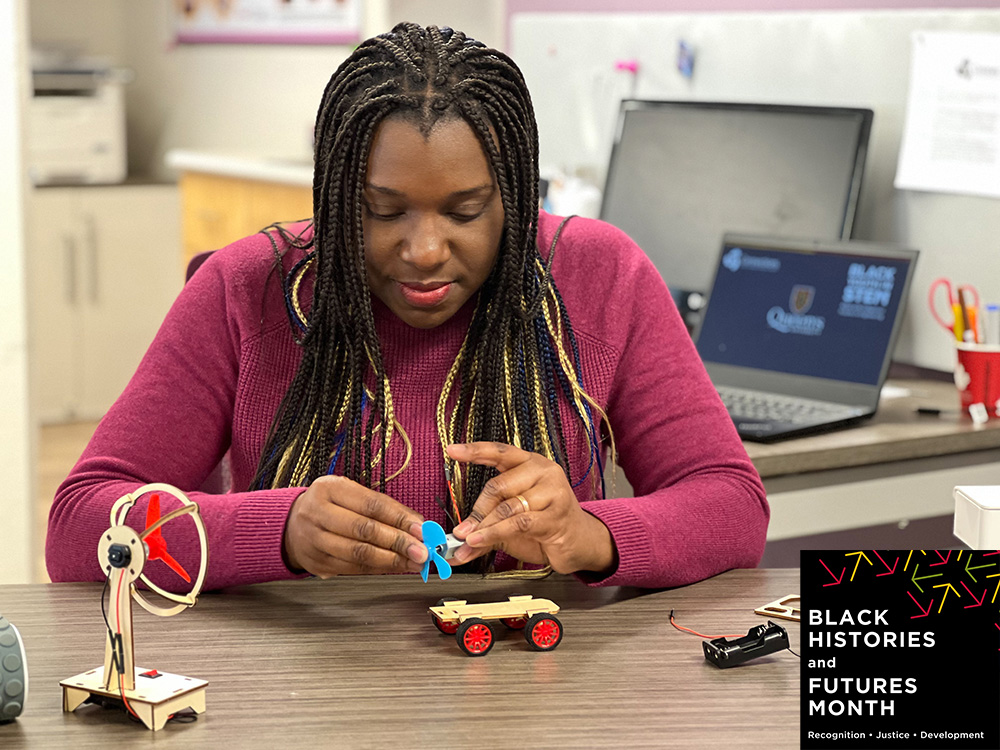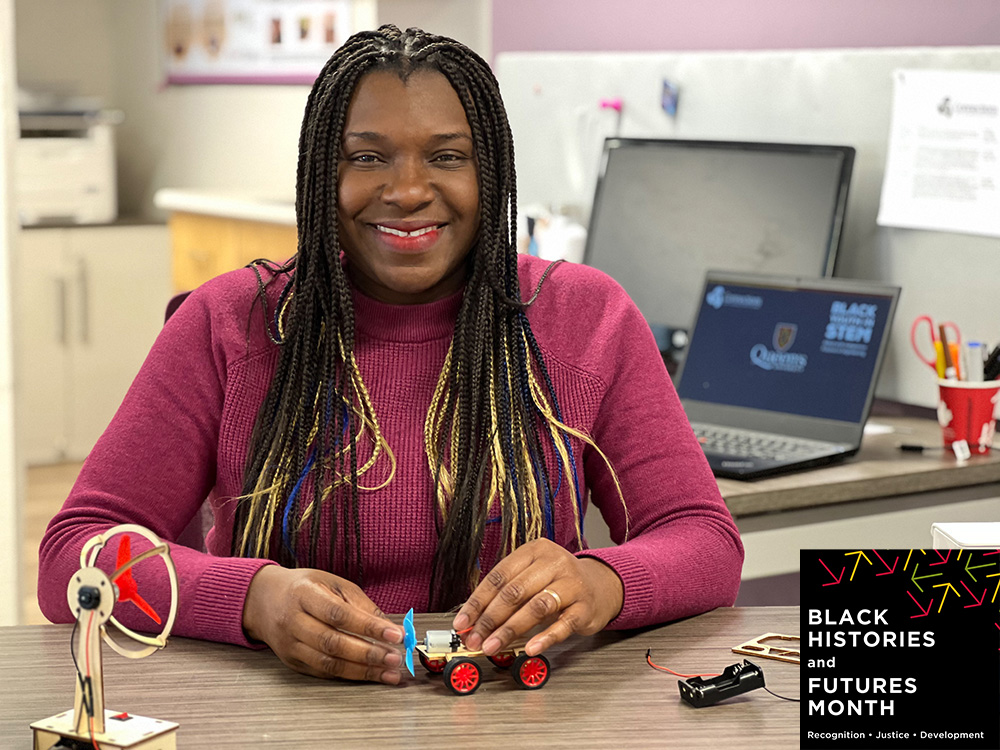Since stepping into the lead role with the Black Youth in STEM program just over a year ago, Cressana Williams-Massey has been busy. She has facilitated 57 virtual and in-person workshops and four camp sessions since the initiative’s launch in January 2022, all while working behind the scenes to secure a slew of new education partnerships.
It is the over 330 young people who have benefited from her programming so far that have made her effort worthwhile. “The kids love to talk to each other while doing their STEM activities,” she says with a smile. “You see them developing friendships. Even their parents become friends. You can really see a community being built.”
That community of kids, excited about learning and enthusiastic about exploring STEM subjects, is what Black Youth in STEM is all about. Designed to support children in grades one through nine, the club offers hands-on programming in a Black-positive space, with a focus on making learning fun. Most of the programming, which is free for participants, is delivered by Queen’s engineering students who identify as Black.
Williams-Massey, who has degrees in chemistry and biochemistry, along with a diploma in science education, has facilitated both in-person and virtual programming in the last year. A six-week virtual program in early 2022, for example, saw 41 kids conducting science experiments at home using STEM kits she put together and sent to their homes in advance. A further 58 young people participated in a virtual program in the spring, with more than 55 on a waitlist.
As people became more comfortable gathering in-person through 2022, Williams-Massey forged a partnership with Ontario Tech University and the Durham Catholic District School Board to offer an in-person summer day program for students in grades seven through 10 living in the Durham region.
Williams-Massey delighted in seeing students puzzling through chemical engineering challenges together — things like creating acid-base indicators from fruits and vegetables, or creating a filter from charcoal, sand and gravel effective enough to clean water that had been muddied with potting soil. “They were excited about that,” she laughs. “They loved it.”
The students also built bridges using popsicle sticks, cardboard, and other materials as part of a civil engineering challenge. “They had to use their imaginations to build strong and stable structures,” says Williams-Massey. “They all seemed to love the judging aspect of it,” she says, adding that their construction efforts were assessed by a panel upon completion. “They can be very competitive!”

Black Youth in STEM developed originally as an initiative of the Indigenous Futures in Engineering (InEng) program, which is committed to increasing the number of Indigenous engineers in Canada through culturally informed outreach in the community. Melanie Howard, the director of InEng, piloted the first program for Black youth, seeing an opportunity to engage another group that is largely underrepresented in STEM fields in Canada, even though these are among the highest paying and fastest growing careers in the country.
That is why Williams-Massey also ensures that the students in her programs learn about current and historical Black scientists and engineers, giving them role models to look up to as they consider their own futures.
“This is a very important program,” she says. “Often times kids naturally gravitate towards role models they see on TV, usually in music or sports. With our programming they meet health sciences and engineering (graduate) students, and the message they get is ‘I’m doing this, and you can do it, too.’ It’s all about providing them with good role models and mentorship.”
Williams-Massey is excited for the future, as the Black Youth in STEM program continues to build momentum by launching a virtual academic support program to engage students in chemistry and mathematics on a Sunday afternoon, in addition to in-person learning that is offered Saturday mornings on campus at Mitchell Hall.
“The Black community in Kingston is small,” she says. “If I want more kids interested in STEM education and enrolling at Queen’s, I must have a relationship based on trust with the community. In doing so, half the job is done to increase the number of students trained in engineering and science. We absolutely love interacting with the children as we make learning fun.”
